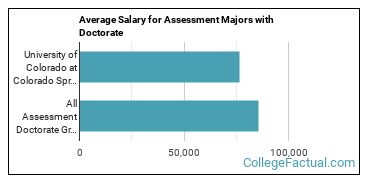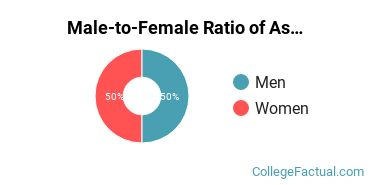 by our College Data Analytics Team
by our College Data Analytics TeamThe main focus area for this major is Educational Evaluation & Research. For more details on this concentration, visit its profile page.
Educational Assessment is a major offered under the education program of study at University of Colorado at Colorado Springs. Here, you’ll find out more about the major doctor’s degree program in assessment, including such details as the number of graduates, diversity of students, and more.
If there’s something special you’re looking for, you can use one of the links below to find it:
Out-of-state part-time graduates at UCCS paid an average of $1,123 per credit hour in 2019-2020. The average for in-state students was $714 per credit hour. Information about average full-time graduate student tuition and fees is shown in the table below.
| In State | Out of State | |
|---|---|---|
| Tuition | $13,918 | $25,774 |
The median early career salary of assessment students who receive their doctor’s degree from UCCS is $76,460 per year. That is 11% lower than the national average of $85,800.

UCCS does not offer an online option for its assessment doctor’s degree program at this time. To see if the school offers distance learning options in other areas, visit the UCCS Online Learning page.
Women made up around 50.0% of the assessment students who took home a doctor’s degree in 2019-2020. This is less than the nationwide number of 70.1%.

Around 37.5% of assessment doctor’s degree recipients at UCCS in 2019-2020 were awarded to racial-ethnic minorities*. This is higher than the nationwide number of 20%.

| Race/Ethnicity | Number of Students |
|---|---|
| Asian | 0 |
| Black or African American | 1 |
| Hispanic or Latino | 2 |
| Native American or Alaska Native | 0 |
| Native Hawaiian or Pacific Islander | 0 |
| White | 5 |
| International Students | 0 |
| Other Races/Ethnicities | 0 |
Educational Assessment students may decide to major in one of the following focus areas.
| Focus Area | Annual Graduates |
|---|---|
| Educational Evaluation & Research | 8 |
*The racial-ethnic minorities count is calculated by taking the total number of students and subtracting white students, international students, and students whose race/ethnicity was unknown. This number is then divided by the total number of students at the school to obtain the racial-ethnic minorities percentage.
More about our data sources and methodologies.